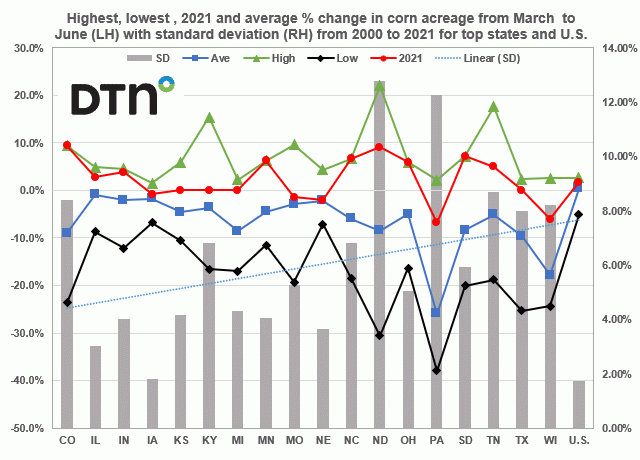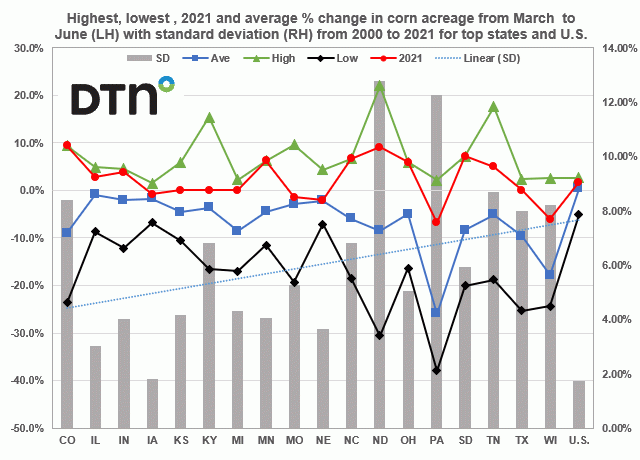Fundamentally Speaking
History of March to June Corn Acreage Changes
This graphic shows the average percent change in corn acreage from the March prospective plantings report to the June acreage figures along with the standard deviation and highest and lowest percent change from 2000 to 2019 for the top 18 producing states and the U.S.
Looking at the average percent change, though the 20-year U.S. average acreage change between the March intentions and the June acreage report is up 0.6%, interestingly all of the 18 top states see an average decline in planted area from the March intentions to the June acreage report.
The largest percent decline is seen in Pennsylvania, the smallest of the 18 states, as on average June acreage is 28% lower than what Pennsylvania farmers indicated in the March report, but a lot of that state's corn goes to silage.
P[L1] D[0x0] M[300x250] OOP[F] ADUNIT[] T[]
That is also true of Wisconsin where June acreage averages 19.5% below the March intentions, and Michigan, another state where a good amount of corn for grain will instead go to silage also at down 9.0%.
Both of these are northern states where weather can influence actual seedings and along these lines, North Dakota with an average of down 8.5% and South Dakota down 9.1% often see intended corn acreage plans go for naught.
On the other hand, the bigger producing states see much lower average declines from March to June.
As to be expected, North Dakota has the highest standard deviation/highest volatility in March to June acreage declines of 12.2% followed up by Pennsylvania.
North Dakota has also recorded the highest positive and negative differentials of all the states as in 2014, corn planted area went from 2.95 million acres in the March intentions to 3.60 million acres by the June report, a 22.0% increase, while in 2001 the March intentions were 0.950 million acres but dropped to 0.660 acres million by June, a 30.5% decline.
© (c) Copyright 2020 DTN, LLC. All rights reserved.





Comments
To comment, please Log In or Join our Community .